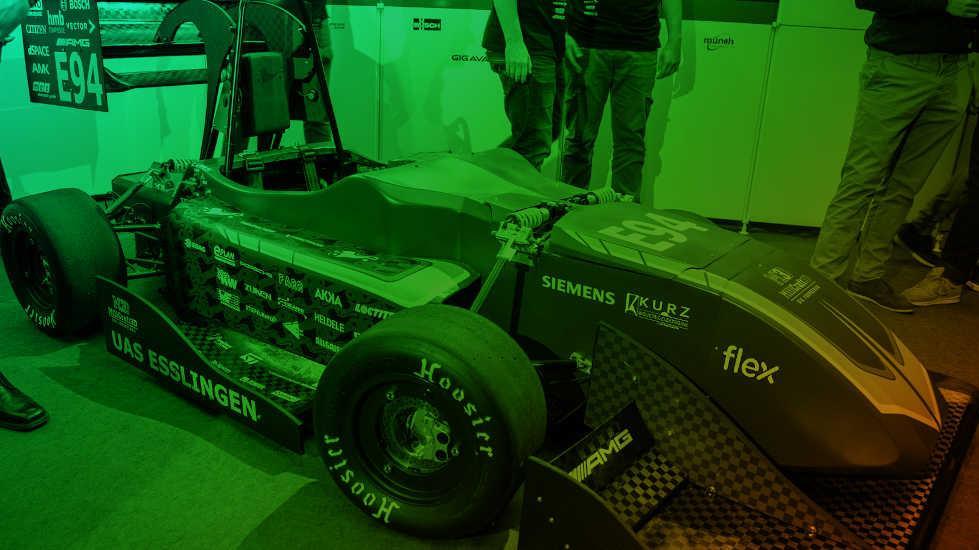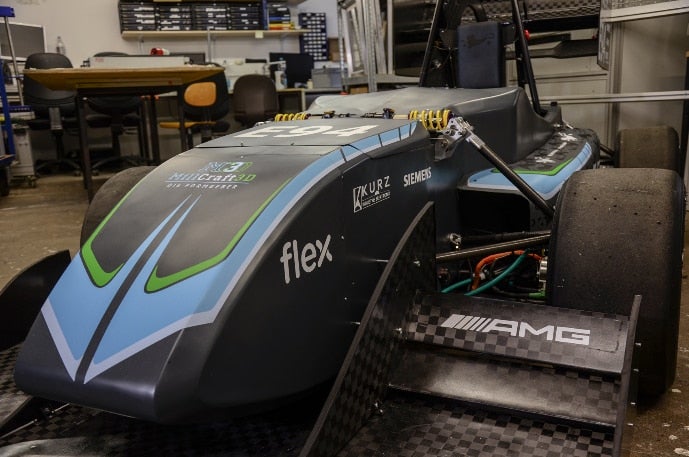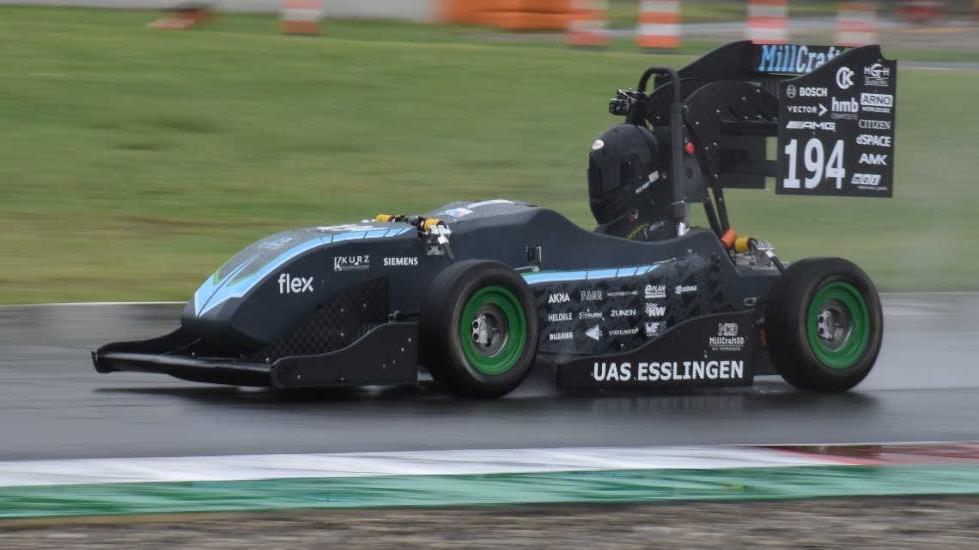
Seven of our automotive engineers took the opportunity to pass on some of their expertise, and gave the Esslingen University of Applied Sciences Formula Student E.Stall team a boost in an international race car competition.

With 500 teams revving up to the finish line in the one-seat formula combustion engine race, and another 90 teams racing electric cars, Formula Student 2019 is a big event. While it originated in the U.S. 40 years ago, it now draws a massive international audience, attracting highly skilled student mechanical engineers.
Competition takes place at well-known racetracks throughout Europe, with finalists landing themselves a spot in the lineup at the Hockenheimring race track in Germany.
More than a speed challenge
This multifaceted competition helps students learn to cope with time and cost pressures similar to those they will face as professionals working in the automotive sector.

Student teams are composed of people from diverse disciplines including mechanical engineering, IT and business studies. Competitors qualify for the competition based on the quality of their business plan, cost management and engineering design. They must convince the judges that their vehicle meets demand, and will generate profit. Technological solutions to engineering the single seater are also evaluated.
In addition, the race car must qualify in tests of acceleration, autocross, skid pad (which evaluates lateral acceleration), and endurance (tolerance for a distance of 22 kilometers). Fuel efficiency is evaluated during the endurance race.
Teams are judged by a panel of motorsport, automotive and supplier industry experts, and the team with the best overall score wins.
We were in pole position as the natural mentor for the students, given our extensive knowledge of electronics, the automotive sector and electric cars in particular.
Engineering support for electric car design
Our engineers mentored the E.Stall student team and offered their expertise in electronic schematics layout and design flow. We held a training session on EMC basics, which covered the layout and design fundamentals for designing an electric car.
We helped the student team optimize their printed circuit board layout challenges, supported the construction and arrangement of components on the circuit board, mentored on safety development, and helped on the conductor tracks. To thank us for our support, the E.Stall team printed our logo on the nose of their race car.
Ten thousand people attended the six-day competition in Hockenheim. 118 student race car teams from over 25 countries participated in the final event, including our own team from Stuttgart.

The E.Stall team will continue to showcase their car at multiple race events throughout Europe, presenting their engineering and racing talents to others.
Our collaboration was a great way to support a student project using our skills and to attract future automotive engineers to come work with us.


